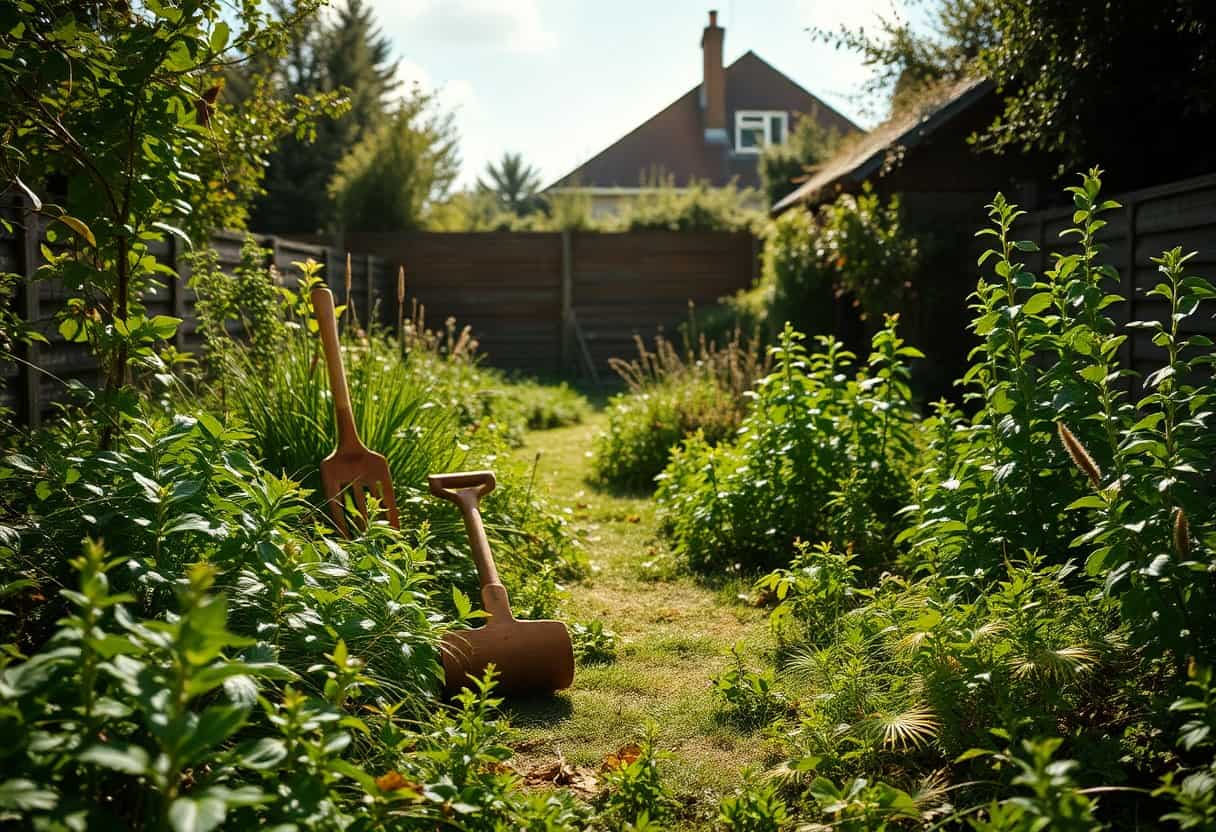It’s fascinating to explore the evolution of waste removal, particularly the humble skip. You may not realise that skips have their origins in the early 20th century, when industrialisation spurred the need for efficient waste disposal. Initially designed for construction sites, skips have transformed into a vital part of modern waste management, catering to both commercial and domestic needs. By delving into this history, you gain a deeper appreciation for how far waste removal has come and its significance in maintaining clean and safe environments.
The Origins of Waste Removal
A comprehensive understanding of the origins of waste removal reveals humanity’s inherent need to maintain hygiene and order. As early societies began to form, waste management practices emerged, reflecting the evolving relationship between people and their environment. You’ll discover how these practices paved the way for the modern systems we rely on today to manage waste effectively.
Ancient Civilizations and Waste Management
Any examination of waste management in ancient civilisations reveals that even the earliest societies recognised the importance of disposing of refuse. From the Indus Valley to the ancient Romans, methods such as rudimentary sanitation systems and designated waste disposal areas illustrate a growing awareness of hygiene. You might be surprised to learn how these practices laid the groundwork for contemporary waste management.
Early Forms of Skips and Waste Containers
Waste disposal methods evolved significantly, leading to the early forms of skips and waste containers. You’ll find that these containers were often crafted from materials readily available in their environment, utilising wood, clay, or even stone. These vessels enabled communities to collect, transport, and manage waste more efficiently, reflecting a crucial progression in human ingenuity.
Further exploration into these early forms reveals that they not only facilitated waste removal but also helped to prevent the spread of disease and maintain a sense of community health. While the initial containers may have been simplistic, they served a purpose that was vital for community organisation. Your understanding of waste management’s journey will deepen as you consider how these early containers contributed to a safer environment, reducing the risks of contamination and promoting public health.
The Evolution of Waste Disposal Practices
Assuming you examine into the progression of waste disposal practices, you’ll uncover a fascinating journey from Ancient Rome’s sophisticated sewer systems to the rudimentary methods employed in early civilisations. Over time, communities developed increasingly effective techniques to manage refuse, influenced by cultural attitudes and advancements in technology. This evolution highlights the changing perceptions of waste and the significance of proper disposal in maintaining public health and environmental integrity.
Medieval Waste Disposal Methods
At the height of the medieval period, waste disposal relied heavily on local practices, with citizens often dumping refuse in ditches or rivers. This haphazard approach not only created unsightly environments but also posed risks to health, leading to outbreaks of disease. Communities began to realise that organised disposal was necessary for wellbeing, prompting rudimentary regulations to manage waste more effectively.
Industrial Revolution and Urban Waste Challenges
To fully appreciate the impact of the Industrial Revolution, you must consider how rapid urbanisation exacerbated waste challenges. As populations swelled in cities, traditional disposal methods proved insufficient, leading to overwhelmed infrastructure and harmful environments.
And amidst the chaos of industrial growth, your ancestors faced unsanitary conditions as waste piled up in the streets, contributing to epidemics and public health crises. The dramatic rise in industrial waste necessitated new approaches, ultimately inspiring innovations like sanitation systems and public services for waste management. This period marked a turning point, where the urgency of addressing urban waste challenges became a priority, laying the groundwork for the organised waste disposal practices we benefit from today.

The Development of Modern Skips
While the concept of waste removal has evolved significantly, the A Brief History of Skips reveals how modern skips came to prominence. Initially, small, open containers were utilised, but over time, the need for more efficient and durable solutions became apparent, leading to the development of the modern skip.
The Birth of the Modern Skip Bin
Skips have transformed from simple containers into highly functional skip bins designed to accommodate various waste types. Their robust construction, often featuring steel materials, enables you to securely dispose of large quantities of rubbish while maintaining safety and ease of transport.
Regulation and Standardization in Waste Management
For waste management to be effective, regulation and standardization play a vital role. Compliance with local laws ensures that waste disposal methods are safe and environmentally friendly, making it necessary for your understanding of the waste management process.
Birth of these regulations arose from the growing concern over environmental impacts and public health. Implementing stringent guidelines has led to increased accountability in waste management practices. These regulations emphasise proper waste segregation and the safe disposal of hazardous materials, significantly reducing pollution and promoting recycling efforts. By adhering to these standards, you contribute to a healthier environment and sustainable future.
The Role of Skips in Contemporary Waste Management
Keep in mind that skips play an integral part in modern waste management strategies. They provide an efficient way to collect and transport waste, significantly reducing the environmental impact of illegal dumping and littering. You can read more about the Complete History of the Skip: What You Need to Know to appreciate their evolution in waste management.
Skips in Residential and Commercial Usage
Skips are widely used in both residential and commercial environments for effective waste disposal. From home renovations to large-scale construction projects, you benefit from having a convenient and reliable solution for managing excess materials. The flexible sizes allow you to choose a skip that matches your project’s needs, ensuring efficient waste collection.
Innovations in Waste Removal Technology
To address evolving waste management challenges, various innovations have emerged to enhance skip functionality. These advancements include smart technology that tracks waste levels, hybrid skips that incorporate renewable energy, and biodegradable skip liners to minimise environmental impact.
With these innovations, skips not only support your efficient waste management but also promote sustainable practices. Advanced tracking systems allow you to receive real-time updates on your skip’s contents, enabling better planning and resource allocation. Furthermore, using renewable energy sources and biodegradable materials contributes to a cleaner environment, ensuring that your waste removal methods align with modern sustainability goals.

Environmental Impact of Skips and Waste Recycling
Your awareness of the environmental impact of skips and waste recycling is imperative for promoting sustainability. Skips play a significant role in waste management, facilitating the collection and disposal of waste responsibly. By using skips and adhering to recycling practices, you contribute to reducing landfill waste, conserving resources, and minimising pollution. Effective waste separation not only benefits the environment but also fosters a culture of sustainability in your community.
The Shift Towards Sustainable Practices
Above all, the shift towards sustainable practices in waste management has become increasingly important. You might find that many skip hire companies are now embracing eco-friendly methods, ensuring materials are recycled and reused. This change not only reduces the carbon footprint but also promotes biodiversity and a healthier planet. Engaging with these sustainable practices can significantly enhance your impact on the environment.
The Future of Waste Removal Solutions
Skips are evolving, adapting to the changing landscape of waste management. The future will likely see increased incorporation of technology, like smart skips that monitor fill levels and optimise collection schedules. Additionally, innovative materials and recycling methods will emerge, making waste removal more efficient and environmentally friendly. As you consider your waste disposal options, keep an eye on these advancements to choose solutions that align with your commitment to sustainability.
Even though the future of waste removal solutions is promising, you must remain aware of the challenges that lie ahead. With a growing population and rising consumption, the amount of waste generated is projected to increase. This scenario demands that you advocate for and adopt innovative waste management strategies, such as embracing circular economy principles. By doing so, you can actively participate in minimising waste and promoting sustainable outcomes for your community and the environment.
Case Studies: Skips Around the World
For a comprehensive understanding of how skips operate globally, consider the following case studies:
- United Kingdom: Over 1.5 million skips hired annually, contributing to a £700 million industry.
- Australia: An increase of 30% in skip hire growth since 2015, with a focus on recycling and eco-friendly practices.
- Japan: Introduced compact skips, reducing urban space used for waste by 40%.
- South Africa: Initiatives have led to a 25% decrease in landfill contributions using skips for construction waste.
For a deeper insight, check out A Brief History Of The Humble Skip.
Waste Management Practices in Developed Countries
At the forefront of waste management, developed countries maintain structured skip systems, integrating robust recycling protocols. For instance, in the United Kingdom, a significant percentage of skip loads are sorted on-site, ensuring that up to 80% of contents are diverted from waste to recycling, exemplifying a high standard in sustainable practices.
Unique Approaches in Developing Regions
Along with traditional practices, developing regions have adopted innovative solutions to waste management, tailoring methodologies to their specific needs and challenges.
Skips have become imperative in developing regions, where limited infrastructure poses challenges for waste collection. For example, in parts of India, local entrepreneurs use mobile skip services, visiting communities daily to collect waste and deposit it at designated sites, thus promoting cleaner environments. This novel approach not only addresses the acute waste crisis but also creates job opportunities within these communities, demonstrating a positive impact on local economies and public health.
To wrap up
With these considerations, you can appreciate the rich history of skips and how waste removal has evolved over time. Understanding the origins and development of skips enriches your knowledge of modern waste management practices. From humble beginnings to the sophisticated systems in place today, you can see how innovation has shaped your approach to waste disposal. This insight reinforces the importance of responsible waste management in preserving your environment for future generations.
FAQ
Q: What are the origins of waste removal practices?
A: The origins of waste removal can be traced back to ancient civilisations, where rudimentary methods were employed. In ancient Rome, for instance, waste was collected in clay pots and disposed of outside the city walls. Over centuries, these practices evolved, leading to the establishment of more structured waste management systems in larger communities.
Q: When did skips first appear in the UK?
A: Skips as we know them today began to emerge in the UK during the late 1960s. They were introduced to facilitate the more efficient collection and disposal of construction and household waste. The design of skips allowed for larger volumes of waste to be transported in a single trip, thus improving waste management processes considerably.
Q: How did the introduction of skips change waste removal methods?
A: The introduction of skips revolutionised waste removal by providing a convenient and cost-effective method for both commercial and residential waste disposal. With skips, businesses could quickly clear construction debris, while households found that they could declutter more effectively. This led to a more organised approach to waste collection, marking a significant shift from previous methods that often involved rudimentary dumping.
Q: What role do skips play in modern waste management?
A: In contemporary waste management, skips play a vital role in both recycling and landfill diversion. They are often used in construction and renovation projects, enabling efficient separation and collection of different types of waste, including recyclable materials. This helps to promote environmental sustainability by minimising the amount of waste that ends up in landfill sites.
Q: How has legislation influenced the use of skips in waste removal?
A: Legislation has had a significant impact on the regulation of waste management practices, including the use of skips. Over the years, laws have been established to ensure that waste is handled responsibly, leading to stricter guidelines on skip usage. These regulations often require permits for placing skips on public roads and mandate proper disposal methods, ensuring that skips are used to facilitate environmentally friendly waste removal.


